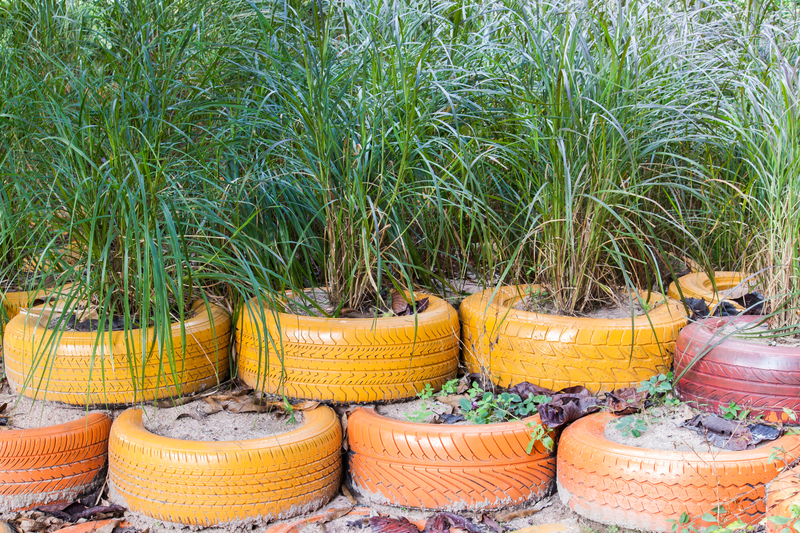The Good Side of Recycling
Posted on 03/04/2025
Recycling is a crucial process in the modern world, playing a significant role in environmental sustainability and resource conservation. The act of recycling involves converting waste materials into new products, reducing the need for raw materials, and minimizing the overall waste that ends up in landfills. While it is a common practice in many communities, the benefits of recycling are often not fully understood or appreciated. This article aims to explore the multifaceted advantages of recycling and why it remains an integral part of our efforts to protect the environment.
Environmental Benefits
One of the most compelling reasons to recycle is its positive impact on the environment. Recycling significantly reduces pollution by lowering the need to collect and process new raw materials, which often involves environmentally harmful activities such as mining, quarrying, and logging. For example, recycling paper saves trees and reduces the number of pollutants released into the air and water from paper manufacturing facilities.
In addition to reducing pollution, recycling also conserves natural resources. By reusing materials, we lessen the strain on finite resources like metals, water, and fossil fuels. This conservation is crucial for ensuring that future generations have access to essential materials. Additionally, recycling helps to reduce greenhouse gas emissions, which are a driving force behind climate change. By using recycled materials, energy consumption is often lower compared to producing new materials from scratch, which translates to fewer emissions.

Economic Advantages
Recycling also presents numerous economic benefits. One key advantage is the creation of jobs. The recycling industry is a labor-intensive sector that requires workers to collect, sort, and process recyclable materials. In many regions, recycling programs contribute significantly to local economies by providing employment opportunities and supporting businesses involved in the recycling supply chain.
Furthermore, recycling can lead to cost savings for both consumers and municipalities. For consumers, recycling can reduce the need to buy new products, as many items can be repurposed or refurbished. For municipalities, recycling programs can lower the costs associated with waste management. Landfills and incineration facilities can be expensive to build and maintain, while recycling can help reduce the volume of waste that needs to be disposed of, thereby lowering operational costs.
Social Impact and Community Development
Recycling has a significant social impact, fostering a sense of community and shared responsibility. Community recycling programs often bring people together with a common goal of promoting sustainability and environmental stewardship. These programs can provide educational opportunities for residents to learn about the importance of recycling and how to do it effectively.
Moreover, recycling initiatives can improve the quality of life in communities by reducing litter and pollution. Clean and well-maintained public spaces contribute to a higher standard of living and can even increase property values. By engaging in recycling activities, communities demonstrate a commitment to protecting their environment, which can inspire other sustainable practices.
Technological Advancements and Innovation
Recycling drives technological innovation as industries seek more efficient and effective ways to process and repurpose materials. Advances in recycling technology have made it possible to recycle a broader range of materials, including complex products like electronics and batteries, which were once challenging to process.
Innovation in recycling also leads to the development of new materials and products. For example, recycled plastics can be transformed into a variety of goods, from clothing to construction materials. These innovations not only reduce waste but also create new markets and opportunities for economic growth. Additionally, as technology improves, the quality and performance of recycled products continue to advance, making them more competitive with products made from virgin materials.

Challenges and Solutions
While recycling offers numerous benefits, it is not without its challenges. Contamination of recyclable materials is a significant issue that can hinder the recycling process. When non-recyclable items are mixed in with recyclables, it can compromise the quality of the recycled materials and increase processing costs. Public education and clear labeling are essential to address this challenge and ensure that materials are properly sorted.
Another challenge is the fluctuating market demand for recycled materials. Prices for recyclables can be volatile, which can impact the economic viability of recycling programs. To overcome this, there is a need for policies and incentives that promote the use of recycled materials in manufacturing and construction industries.
Furthermore, not all materials are equally recyclable, and some processes can be energy-intensive. Continued research and development are needed to improve the efficiency of recycling technologies and expand the range of recyclable materials. Collaboration between governments, businesses, and communities is also crucial to developing sustainable recycling systems that can adapt to changing market conditions and environmental priorities.
Conclusion
Recycling is a powerful tool for promoting environmental sustainability, economic development, and community well-being. By reducing pollution, conserving natural resources, creating jobs, and fostering innovation, recycling offers numerous advantages that make it an essential component of modern waste management strategies. While challenges remain, continued efforts to improve recycling processes and raise public awareness can help maximize its benefits and contribute to a more sustainable future. Embracing recycling is not just a choice but a responsibility that we all share in preserving our planet for generations to come.






